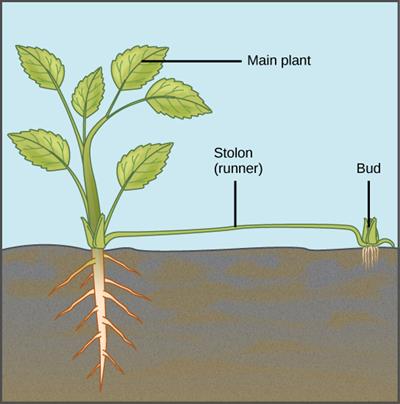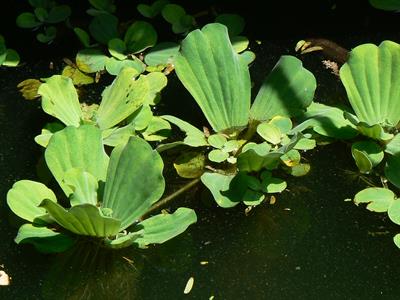PDF chapter test TRY NOW
The herbaceous plant's stems are very fragile. In these plants, one part of the stem lives underground, and the other part lives above the ground. These types of plants are known as sub-aerial stems. In general, this type of reproduction can be seen in creepers.
There are two types of subaerial stems. They are as follows:
- Stolon
- Offset
1. Stolon:

Stolon and runner
- These are the stems that grow on the surface of the ground or just below the soil's surface.
- Roots and buds are developed at the nodes, and new shoots arise at the buds that develop above the soil's surface.
- When they produce stems that run horizontally above the ground, they are known as runners.
- Once the new stolon has developed, it is cut off from the parent; eventually, the parent stolon dies, and it has been seen in the plants such as Colocasia, strawberry, Cynodon, Oxalis, Vallisneria.
2. Offset:

Pistia offsets
- These are short lateral shootscapable of developing a root system naturally, both when attached to a parent plant or detached from it.
- Offsets are found either on roots or stems.
- When formed on roots and produce aerial shoots, they are known as suckers.
- They consist of clustered leaves at the tips.
- Pistia, Eichhornia or water hyacinth (offsets), and banana and pineapple (suckers) are some of the examples.
Propagation by leaves:

Leaf propagation in Bryophyllum
- The leaves of plants like Bryophyllum possess notches at the leaf margins where the adventitious buds will develop..
- These adventitious buds are known as epiphyllous buds.
- When these buds fall on the ground, they develop adventitious roots that give rise to new plants.
- Such type of propagation is also seen in plants such as Begonia, Kalanchoe, Agave.
Bulbils:
Bulbils are flower buds that have been changed into globose in some plants. These fall to the ground and sprout into new plants.
Important!
Globose is a type of inflorescence in which the peduncle is reduced or condensed to a circular disc.
It is seen in Agave.

Reproduction through bulbils in Agave
Reference:
https://commons.wikimedia.org/wiki/File:Bryophyllum_sp_2.jpg
https://commons.wikimedia.org/wiki/File:Bryophyllum_Daigremontianum_macro_1.jpg
https://upload.wikimedia.org/wikipedia/commons/8/82/Figure_32_03_02.jpg
https://commons.wikimedia.org/wiki/File:Agave_vilmoriniana_01.JPG
https://www.flickr.com/photos/91314344@N00/3439066268/
https://commons.wikimedia.org/wiki/File:Bryophyllum_Daigremontianum_macro_1.jpg
https://upload.wikimedia.org/wikipedia/commons/8/82/Figure_32_03_02.jpg
https://commons.wikimedia.org/wiki/File:Agave_vilmoriniana_01.JPG
https://www.flickr.com/photos/91314344@N00/3439066268/
https://www.flickr.com/photos/dinesh_valke/41108452071
